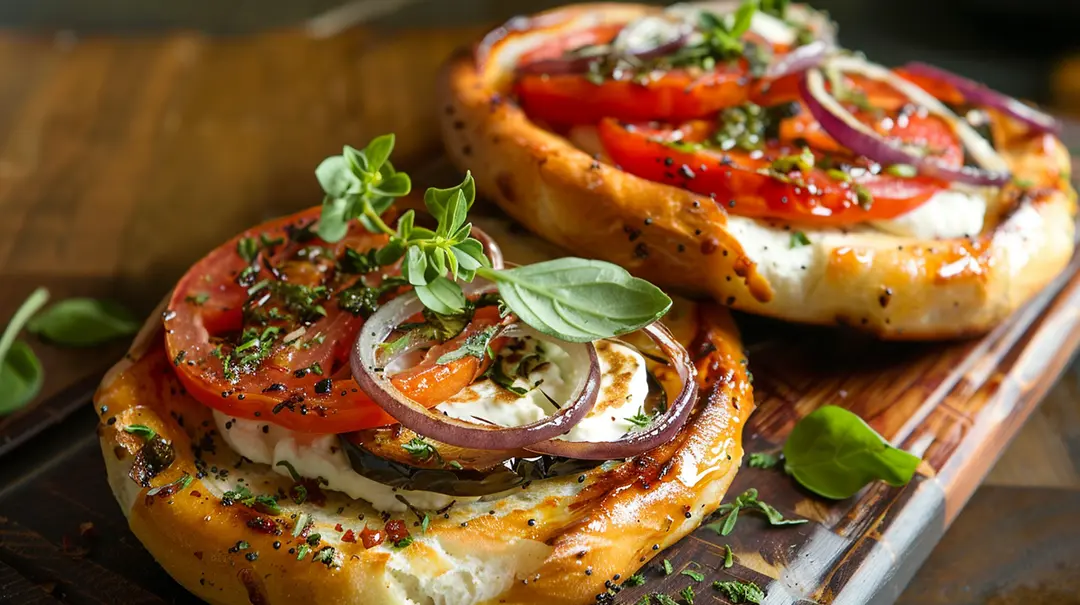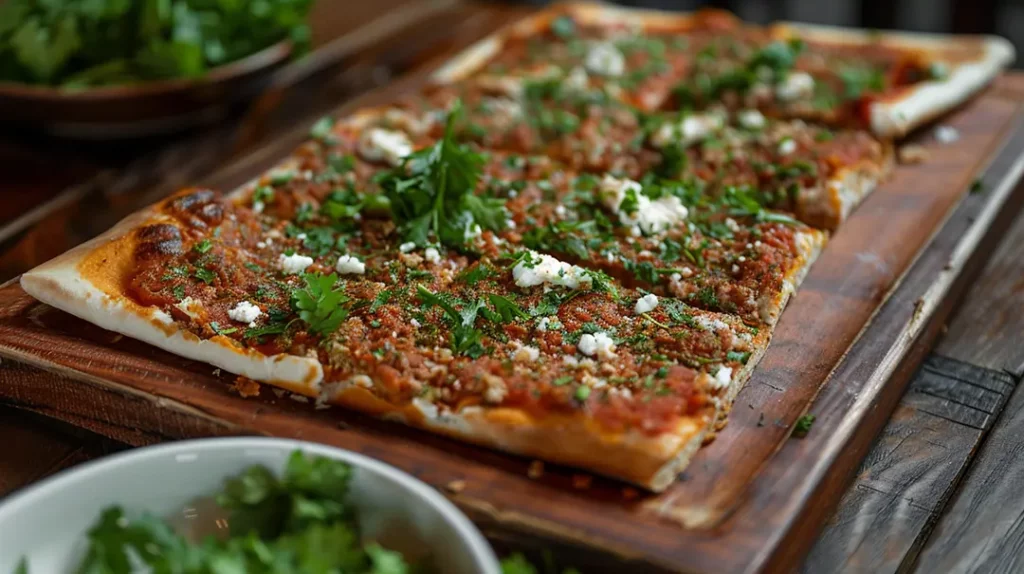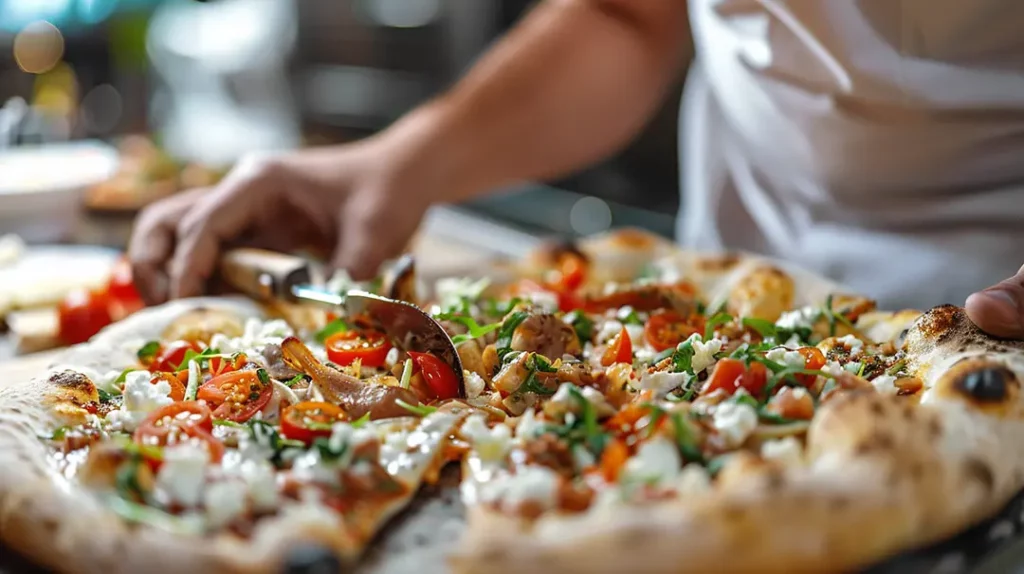
Flatbreads with toppings predate pizza, originating in ancient civilizations. Cultural exchanges and migration shaped varied flatbread recipes across regions. Technological advances and ingredient availability led to the modern pizza we enjoy today.
Flatbreads with toppings, which predate the Italian pizza by centuries, have their roots in ancient civilisations, particularly the Byzantine Roman Empire and modern Turkey. This long history demonstrates the fluid nature of food and culture, constantly shaped by migration, economic circumstances, and cultural exchanges, leading to the modern pizza we know today. Pizza, in its contemporary form, is a product of these diverse influences rather than an Italian invention. s
Flatbreads have been a staple food since ancient times, originating in the Middle East around 10,000 to 5,000 BCE. Early flatbreads were topped with herbs and oil and used as a base for other foods. The Egyptians, Greeks, and Romans had their versions. Romans made panis focacius, a flatbread topped with cheese and vegetables. These simple recipes evolved as ingredients and cooking methods spread across regions, highlighting the fluid nature of culinary traditions.

The earliest flatbreads emerged in the Fertile Crescent, where agriculture first developed. As people migrated, they carried their culinary traditions with them. For instance, the spread of agriculture from the Middle East into Europe introduced various grains that became the foundation for flatbreads. The Greeks and Romans refined flatbreads using local ingredients and adding toppings. Greeks made plakous, seasoned with herbs, while Romans created panis focacius, topped with cheese and other ingredients.
The Byzantine Empire, continuing from the Roman Empire in the East, influenced flatbreads. Byzantine cuisine combined Mediterranean and Near Eastern elements, creating diverse flatbread dishes. Cultural exchanges with regions like Anatolia (modern Turkey) introduced new ingredients and techniques. As the Byzantine Empire transitioned into the Ottoman Empire, the culinary landscape shifted. The Ottomans developed their flatbreads, such as pide and lahmacun, featuring various toppings and baked in communal ovens. This blending of culinary traditions enriched the flatbread repertoire, incorporating spices, meats, and vegetables.

The development of ovens significantly impacted how flatbreads were made. Traditional methods, such as baking on hot stones or in clay ovens, evolved into more sophisticated baking techniques. The introduction of wood-fired ovens allowed for more consistent heat and better cooking conditions, leading to improved textures and flavours in flatbreads. The use of leavening agents, such as yeast, also transformed flatbreads. While many early flatbreads were unleavened, the incorporation of yeast allowed for lighter, airier versions, paving the way for modern pizza dough.
The Columbian Exchange in the 15th and 16th centuries introduced new ingredients to Europe, including tomatoes, peppers, and various spices. The arrival of tomatoes from the Americas revolutionised flatbreads, as they became a staple topping in Italy, leading to the creation of the iconic tomato-based pizza.
The rise of urban centres in Italy, particularly Naples, during the 18th and 19th centuries created a demand for inexpensive, quick meals. Street vendors began selling flatbreads topped with tomatoes, cheese, and other affordable ingredients, making them accessible to the working class. This economic shift allowed for the popularisation of pizza, as it became a staple food for those seeking a quick and satisfying meal.
In the 20th century, the globalisation of food culture led to the spread of pizza around the world. Different regions adapted the basic concept of flatbreads with toppings to suit local tastes and ingredients, resulting in a wide variety of styles, from Chicago deep-dish to Turkish pide and Indian naan with toppings.

The story of flatbreads and pizza exemplifies how food is fluid, adapting to the movement of people, cultural exchanges, and economic shifts. Recipes and cooking techniques develop over time, influenced by new ingredients, technological advances, and changing tastes. As ingredients, techniques, and culinary traditions travel across regions and eras, they blend and evolve to create new and diverse dishes. From the ancient flatbreads of the Middle East to the tomato-topped pizzas of Naples, each iteration reflects the dynamic exchange of ideas and tastes. Today, this evolution continues with the addition of unconventional toppings like pineapple, demonstrating that food, much like culture, is always in a state of transformation, embracing new influences and innovations. The history of pizza is a testament to this dynamic process, reflecting the ever-changing landscape of human society.

At Med.kitchen, our passion lies in crafting exceptional culinary experiences through our online platform. We specialise in sharing a wealth of knowledge via articles, recipes, courses, and online mentoring, aiming to inspire both novice and seasoned chefs alike. Our focus has shifted from private dining to being an online source of gastronomic inspiration, allowing you to explore and refine your culinary skills from the comfort of your home..